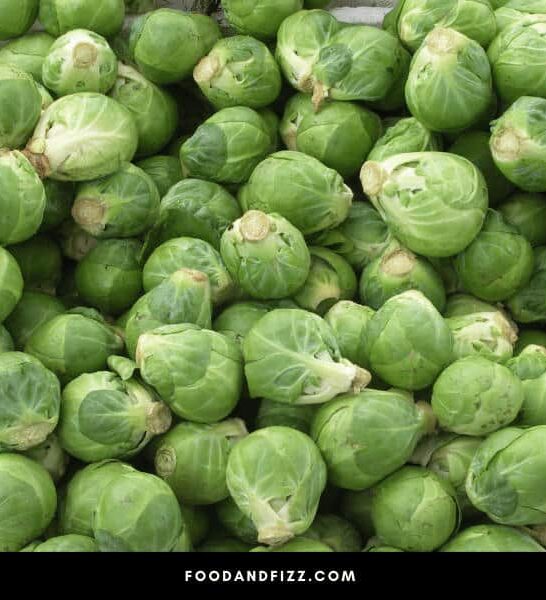When we moved to the suburbs after a decade in the city, I was super excited to finally grow my own vegetable patch in the backyard. I had always dreamed of cultivating my own tomatoes, lettuce, cucumbers, and Brussels sprouts.
Having set up my garden, I planted the seeds, waited patiently as the leaves developed and, finally, the Brussels sprouts were almost ready for harvest. Then disaster struck! Black spots on the Brussels sprouts! What were they and could I still eat my Brussels sprouts?
I headed to the local vegetable market where I usually buy my fresh produce to ask the local farmers some questions, and the answers were encouraging. So if you’ve ever struggled with black-spotted Brussels sprouts, read on.
Black Spots on Brussels Sprouts? – What Are They? Safe to Eat?
Black spots may show up on Brussels sprouts as a result of several factors. Firstly, your sprouts may have developed a fungal infection, bacterial infection, or mold, which can lead to black spots forming on the whole plant, the sprouts, and even the leaves. When the spots are mold growths, the whole Brussels ssprout should be discarded. Fungi can be removed by trimming the exterior leaves, but with bacterial infection and rot, the damage is often too severe for the plant to be safe for human consumption.

6 Causes of Black Spots on Brussels Sprouts
There are several causes of black spots showing up on your Brussels sprouts, and depending on what caused the spots, you may still be able to eat the plant, if you act quickly.
1. Ring Spot
Your Brussels sprouts plant may have contracted a fungal infection of the disease causing mycosphaerella brassicicola, which creates blackish colored spots all over the plant leaves.
These spots are a dark gray-black color, and inside the spot, there are darker black specks. In some cases, if left untreated, the spots may show on the sprouts themselves.
Spray your vegetables once a week with a copper sulfide anti-fungal spray to alleviate the symptoms and control fungal reproduction by killing off colonies of fungi.
The following season, plant a different vegetable in the spot where the Brussels sprouts were, moving the new Brussels sprout crop to a different vegetable bed. Most Brassic-specific fungi don’t affect other vegetables.
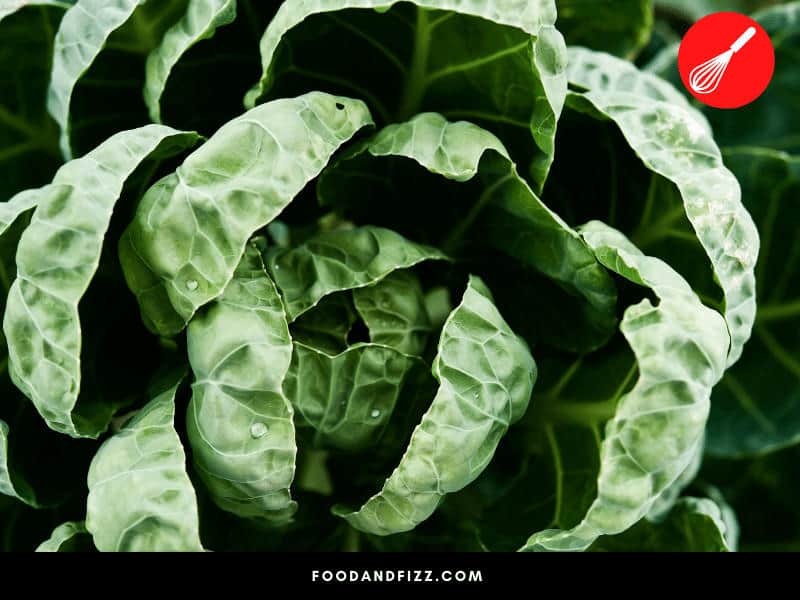
2. Mold and Mildew
While mold and mildew aren’t the same, they have similar characteristics (even if they don’t look the same). Mold usually shows as dark black spots, while mildew shows up as a fluffy white coating. Either of these will eventually cause massive rot and plant death.
Eating Brussels sprouts with either of these growths present could expose you to mycotoxins that can be harmful and trigger severe allergies. If you find mold or mildew on your Brussels sprouts, you should throw away the crop as the risk of eating these is too great.
Mycotoxins can cause anaphylactic shock, and in severe cases, it can lead to death.
3. Black Rot
When your Brussel sprouts have contracted the bacteria Xanthomonas campestris pv. Campestrism, you are dealing with the dreaded black rot. I only mention black rot since its name may suggest that it can cause black spots, but it actually affects the plant roots, causing yellow “burned” patches on the leaves.
So before you jump to the conclusion that black spots must mean black rot, think twice.
4. Soft Rot
If you find large black spots that are soft to the touch and definitely rotten, you may be dealing with the Pseudomonas genus of bacteria. All fruits and vegetables can contract this. Usually, it is spread by insect bites, cuts, abrasions, and scars on the plant and on the Brussels sprouts themselves.
Aphids, thrips, and other leaf-feeding insects may cause this disease as they carry the pathogens and will expose your plant to this with each bite.
There is no cure for soft rot, so best is to remove the affected plants and prevent the spread of this disease. Carefully sanitize all garden tools and wash your hands before handling any healthy plants as the pathogens are highly transmittable.
5. Bacterial Leaf Spot
If you find purple to black spots on your Brussels sprouts’ leaves, you may have a case of bacterial leaf spot, which is caused by pseudomonas syringae pv. maculicola bacteria.
This particular bacteria is usually found in plant debris, so clearing away old and rotting plant matter from around the plant stems is a good way to prevent infection.
Rotate your crop, and avoid replanting brassica plants in the same garden bed two years in a row.
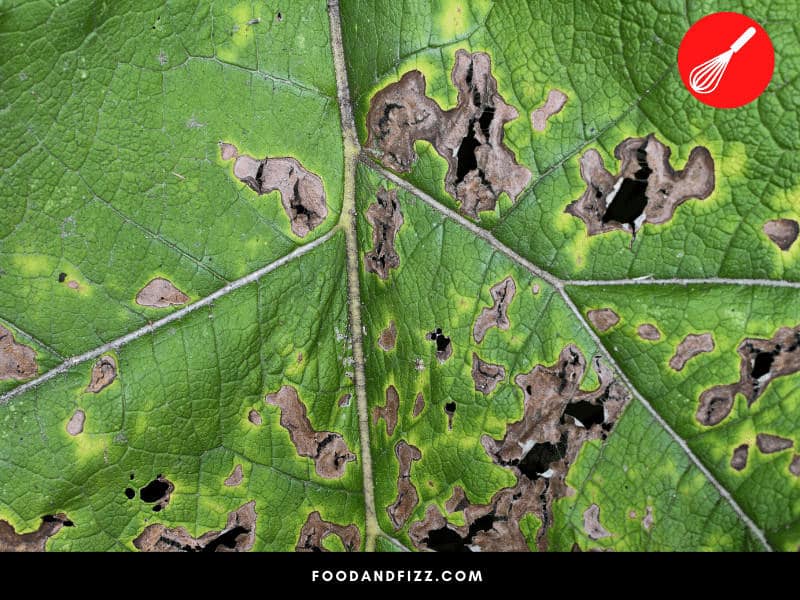
6. Black Spot
The likely culprit for the spots on my Brussels sprouts was appropriately named “black spot” and it is caused by Alternaria brassicicola and A. brassicae fungi. These two fungi can lead to the development of black spots on the sprout leaves.
If not treated immediately, the spots will begin to rot, dissolving through the underlying leaves until the whole sprout is rotten.
The only effective treatment is to immediately remove the outer leaves that are affected and examine any inner leaves of the sprout to check for infection.
Fortunately, this cause of black spots is most prevalent in wet and cool conditions that are ideal for the fungi to spread. In cooler and wet climates, planting Brussels sprout cultivar that is resistant to fungi is ideal to prevent black spots.
Ways to Prevent Black Spot in Brussel Sprouts
You will need to follow these tips to help keep your Brussels sprouts black spot-free:
- Rotate your crops, never planting brassicas in the same garden bed for more than one season.
- Remove any plant debris to keep the vegetable beds free of rotten and moldy plant matter that breeds bacteria.
- Water from ground level as excess water on leaves will lead to rot and create entry points for fungi and bacterial infections.
- Water early in the day so the plant has enough time to dry off.
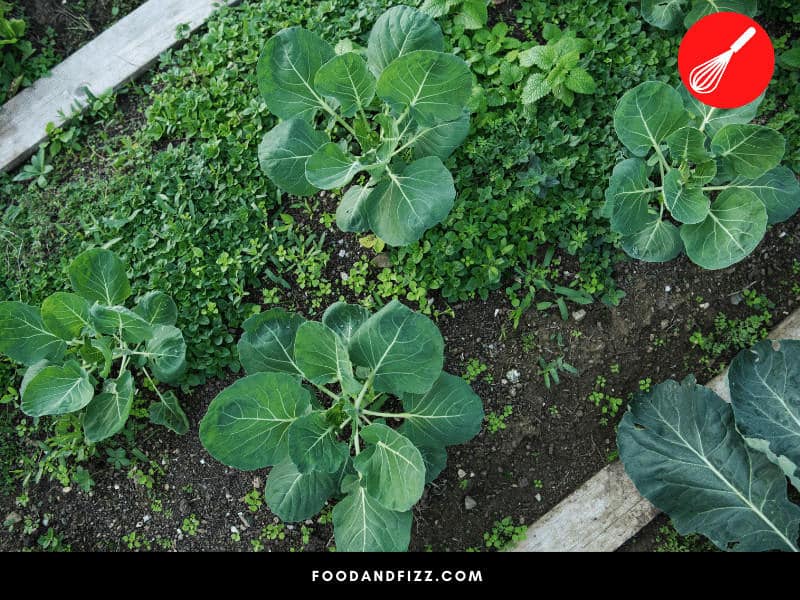
Conclusion On Black Spots On Brussels Sprouts
I am really glad I learned all about the black spots on Brussels sprouts and other vegetables, and I immediately removed the leaf litter that I had used as mulch around the base of my veggie plants.
Then I took a photo of the garden, so I could remember what I planted where for the next planting season.
This way, I could rotate my crops to give the last traces of fungi a boot. Now, I can’t wait for my next crop of Brussels sprouts and other veggies.
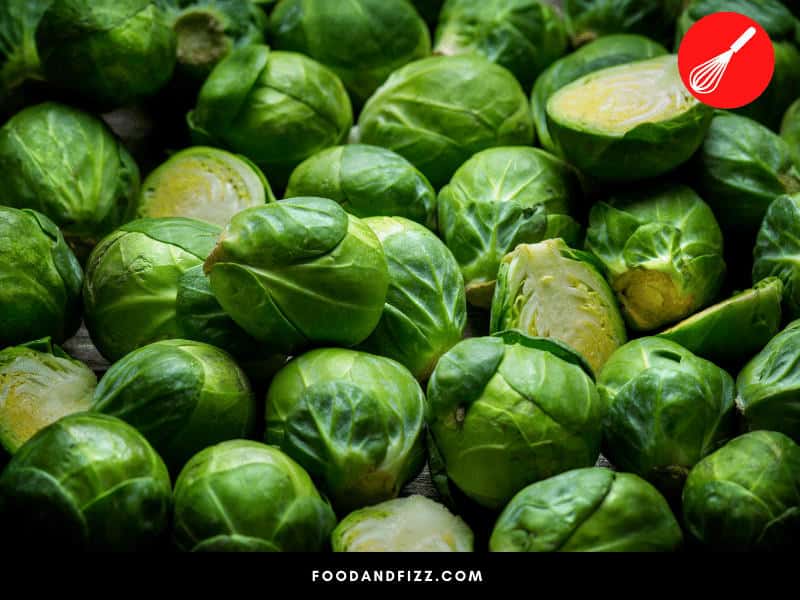
Frequently Asked Questions to Black Spots on Brussels Sprouts
Can You Eat Brussels Sprouts With Black Spots?
If the spots are mold or fungi caused, it is better to throw away the Brussel sprouts to prevent accidental ingestion of mycotoxins.
How Can You Tell if Brussels Sprouts Are Bad?
Among the signs such as yellow leaves and mushy interior leaves, black spots are a good sign the sprouts are questionable and should rather be discarded.
Why Are My Sprouts Going Black?
Brussel sprouts go black when there is a bacterial or fungal infection that causes leaf spot, lead rot, ring spot, or black spot, which will create black spots on the leaves.

